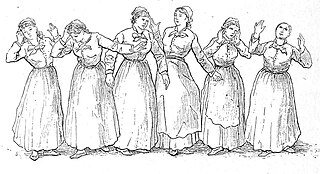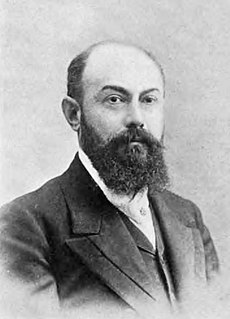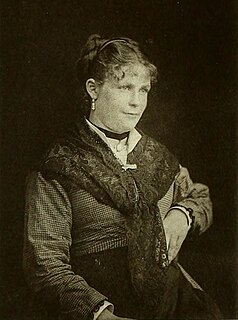Related Research Articles

Hypnosis is a human condition involving focused attention, reduced peripheral awareness, and an enhanced capacity to respond to suggestion.
Psychoanalysis is a set of theories and therapeutic techniques that deal in part with the unconscious mind, and which together form a method of treatment for mental disorders. The discipline was established in the early 1890s by Austrian neurologist Sigmund Freud, who developed the practice from his theoretical model of personality organization and development, psychoanalytic theory. Freud's work stems partly from the clinical work of Josef Breuer and others. Psychoanalysis was later developed in different directions, mostly by students of Freud, such as Alfred Adler and his collaborator, Carl Gustav Jung, as well as by neo-Freudian thinkers, such as Erich Fromm, Karen Horney, and Harry Stack Sullivan.

Sigmund Freud was an Austrian neurologist and the founder of psychoanalysis, a clinical method for evaluating and treating pathologies in the psyche through dialogue between a patient and a psychoanalyst.

Milton Hyland Erickson was an American psychiatrist and psychologist specializing in medical hypnosis and family therapy. He was founding president of the American Society for Clinical Hypnosis and a fellow of the American Psychiatric Association, the American Psychological Association, and the American Psychopathological Association. He is noted for his approach to the unconscious mind as creative and solution-generating. He is also noted for influencing brief therapy, strategic family therapy, family systems therapy, solution focused brief therapy, and neuro-linguistic programming.

Hysteria is a term used colloquially to mean ungovernable emotional excess and can refer to a temporary state of mind or emotion. In the nineteenth century, hysteria was considered a diagnosable physical illness in women. It is assumed that the basis for diagnosis operated under the belief that women are predisposed to mental and behavioral conditions; an interpretation of sex-related differences in stress responses. In the twentieth century, it shifted to being considered a mental illness. Many influential people such as Sigmund Freud and Jean-Martin Charcot dedicated research to hysteria patients.
Catharsis is the purification and purgation of emotions through dramatic art, or it may be any extreme emotional state that results in renewal and restoration. In its literal medical sense, it refers to the evacuation of the catamenia—the menstrual fluid or other reproductive material from the patient. But as a metaphor it was originally used by Aristotle in the Poetics, comparing the effects of tragedy on the mind of a spectator to the effect of catharsis on the body.

Orgone is a pseudoscientific concept variously described as an esoteric energy or hypothetical universal life force. Originally proposed in the 1930s by Wilhelm Reich, and developed by Reich's student Charles Kelley after Reich's death in 1957, orgone was conceived as the anti-entropic principle of the universe, a creative substratum in all of nature comparable to Mesmer's animal magnetism (1779), to the Odic force (1845) of Carl Reichenbach and to Henri Bergson's élan vital (1907). Orgone was seen as a massless, omnipresent substance, similar to luminiferous aether, but more closely associated with living energy than with inert matter. It could allegedly coalesce to create organization on all scales, from the smallest microscopic units—called "bions" in orgone theory—to macroscopic structures like organisms, clouds, or even galaxies.

Psychology is an academic and applied discipline involving the scientific study of human mental functions and behavior. Occasionally, in addition or opposition to employing the scientific method, it also relies on symbolic interpretation and critical analysis, although these traditions have tended to be less pronounced than in other social sciences, such as sociology. Psychologists study phenomena such as perception, cognition, emotion, personality, behavior, and interpersonal relationships. Some, especially depth psychologists, also study the unconscious mind.
Free association is the expression of the content of consciousness without censorship as an aid in gaining access to unconscious processes. The technique is used in psychoanalysis which was originally devised by Sigmund Freud out of the hypnotic method of his mentor and colleague, Josef Breuer.
Dissociation, as a concept that has been developed over time, is any of a wide array of experiences, ranging from a mild emotional detachment from the immediate surroundings, to a more severe disconnection from physical and emotional experiences. The major characteristic of all dissociative phenomena involves a detachment from reality, rather than a loss of reality as in psychosis.
In psychology, the subconscious is the part of the mind that is not currently of focal awareness.
Countertransference is defined as redirection of a psychotherapist's feelings toward a client – or, more generally, as a therapist's emotional entanglement with a client.
Vegetotherapy is a form of Reichian psychotherapy that involves the physical manifestations of emotions.
The Nancy School was a French hypnosis-centered school of psychotherapy. The origins of the thoughts were brought about by Ambroise-Auguste Liébeault in 1866, in Nancy, France. Through his publications and therapy sessions he was able to gain the attention/support from Hippolyte Bernheim: another Nancy Doctor that further evolved Liébeault's thoughts and practices to form what is known as the Nancy School.
Somatic experiencing (SE) is a method of alternative therapy aimed at treating trauma and stressor related disorders like PTSD. The primary goal of SE is to modify the trauma-related stress response through bottom-up processing. The Clients’ attention is directed to internal sensations,, rather than to primarily cognitive or emotional experiences. The method was developed by Peter A. Levine.

Pierre Marie Félix Janet was a pioneering French psychologist, physician, philosopher, and psychotherapist in the field of dissociation and traumatic memory.
The development of concepts, beliefs and practices related to hypnosis and hypnotherapy have been documented since prehistoric to modern times.
Psychoanalytic conceptions of language refers to the intersection of psychoanalytic theory with linguistics and psycholinguistics. Language has been an integral component of the psychoanalytic framework since its inception, as evidenced by the fact that Anna O., whose treatment via the cathartic method influenced the later development of psychoanalytic therapy, referred to her method of treatment as the "talking cure".
Within the work of the Austrian psychoanalyst Wilhelm Reich (1897–1957), orgastic potency is a human's natural ability to experience an orgasm with certain psychosomatic characteristics and resulting in full sexual gratification.

Marie "Blanche" Wittman was a French woman known as one of the hysteria patients of Jean-Martin Charcot. She was institutionalized in La Salpêtrière in 1877 and was treated by Charcot until his death in 1893. She later became a radiology assistant at the hospital, which resulted in amputations of her arms due to radiation poisoning.
References
- Sem, Tatyana. Shamanic Healing Rituals. Russian Museum of Ethnography.
- Olsen, Paul. Emotional Flooding. New York: Behavioral Publications, 1976. Print.
- Ellenberger, Henri. The Discovery of the Unconscious . New York: Basic Books, 1970. Print.
- Kiev, Ari Prescientific Psychiatry. American Handbook of Psychiatry. 1st ed. 2. New York: Basic Books, 1966. Print.
- Chesney, Penny. Shamanism. Globalight. Globalight Enterprises, 2007. Web. 29 Sep 2011.
- Haule, John Ryan. Pierre Janet And Dissociation: The First Transference Theory and Its Origins In Hypnosis. American Journal of Clinical Hypnosis. Vol. 29. Oct. (1986): 86-94. Web. 29 Sep. 2011.
- Rycroft, Charles. A Critical Dictionary of Psychoanalysis. New York: Basic Books, 1968. Print.
- Mann, W. Edward. Orgone, Reich and eros. New York: Farrar, Straus and Giroux, 1970. Print.
- Reich, Wilhelm. Listen, Little Man! New York: Farrar, Straus and Giroux, 1970. Print.